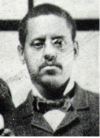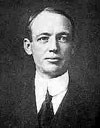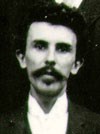|
Edison had enough genius to see the genius in others. Already by the time he moved to Menlo Park in 1876, he had gathered many of the men who would work with him for the rest of their lives. By the time Edison built his West Orange lab complex, men came from all over the US and Europe to work with the famous inventor. Often these young "muckers," as Edison called them, were fresh out of college or technical training. What better place to start a career? Unlike most inventors, Edison depended upon dozens of "muckers" to build and test his ideas. In return, they received "only workmen's wages." But, the inventor said, it was "not the money they want, but the chance for their ambition to work." The average work week was six days for a total of 55 hours. But if Edison had a bright idea, days at work would extend far into the night.What was it like to work for Edison? One mucker said that he "could wither one with his biting sarcasm or ridicule one into extinction." Just think how it would feel to listen to the world's greatest inventor criticize your work. On the other hand, as electrician Arthur Kennelly stated, "The privilege which I had being with this great man for six years was the greatest inspiration of my life."

NPS Photo Were there any African-American muckers? Although Latimer never worked directly for Edison at any of his laboratories, his many talents deserve special mention. The son of an escaped slave, Latimer overcame poverty and racism in his scientific career. While working for Hiram S. Maxim, a competitor with Edison in the power and lighting business, Latimer patented his own improved method to make carbon filaments. From 1884 to 1896 he worked in New York City for the Edison Electric Light Company as an engineer, draftsman and legal expert. Latimer later joined the Edison Pioneers, a group of old Edison employees--its only African-American member. Since he never worked with Edison at the Menlo Park or West Orange laboratories, however, he is not technically a "mucker." As far as we know, there were no African-American muckers. 
NPS Photo Jonas Walter Aylsworth (1868-1916) Plastics pioneer. A gifted chemist, Aylsworth began working at the West Orange labs when they opened in 1887. Much of his work involved testing materials for phonograph recordings. He left around 1891 only to return ten years later, working both for Edison and in his own laboratory. He patented condensite,a mixture of phenol and formaldehyde, for use in Edison Diamond Disc records. His work with "interpenetrating polymers" came decades before other scientists made similar discoveries with plastics. 
NPS Photo John Ott (1850-1931) Friend until the end. Like his younger brother Fred, Ott worked with Edison in Newark as a machinist in the 1870s. Both brothers followed Edison to Menlo Park in 1876, where John was Edison's principal model and instrument maker. After the move to West Orange in 1887, he served as superintendent of the machine shop until a terrible fall in 1895 left him severely injured. Ott held 22 patents, some with Edison. He died only one day after the inventor; his crutches and wheelchair were placed by Edison's casket at Mrs. Edison's request. 
NPS Photo Reginald Fessenden (1866-1931) "But I am not a chemist..." Canadian-born Fessenden had been trained as an electrician. So when Edison wanted to make him a chemist, he protested. Edison replied, "I have had a lot of chemists . . . but none of them can get results." Fessenden turned out to be an excellent chemist, working with insulation for electrical wires. He left the West Orange lab around 1889 and patented several inventions of his own, including patents for telephony and telegraphy. In 1906 he became the first person to broadcast words and music over radio waves. 
NPS Photo William Kennedy Laurie Dickson (1860-1935) Film pioneer. Along with most of the West Orange crew in the 1890s, Dickson worked mainly on Edison's failed iron ore mine in western New Jersey. However, his skill as staff photographer led him to assist Edison in his work with motion pictures. Historians still argue over who was more important to the development of films, Dickson or Edison. Together, though, they accomplished more than they did on their own later. The fast pace of work at the lab left Dickson "much afflicted by brain exhaustion." In 1893 he suffered a nervous breakdown. By the next year, he was already working for a competing company while still on Edison's payroll. The two parted bitterly the next year and Dickson returned to his native Britain to work for the American Mutoscope and Biograph Company. 
NPS Photo Walter Miller (1870-1941) Sound recording expert. Born in nearby East Orange, Miller started working as a 17-year-old apprentice "boy" at the West Orange lab soon after it opened in 1887. Many muckers worked here a few years and then moved on, but Miller stayed at West Orange his entire career. He proved himself in many different jobs. As manager of the Recording Department and Edison's primary recording expert, he ran the New York City studio where recordings were made. Meanwhile he also carried on experimental recordings in West Orange. With Jonas Aylsworth (mentioned above) he earned several patents covering how to duplicate records. He retired from Thomas A. Edison, Incorporated in 1937. |
Last updated: August 2, 2024
